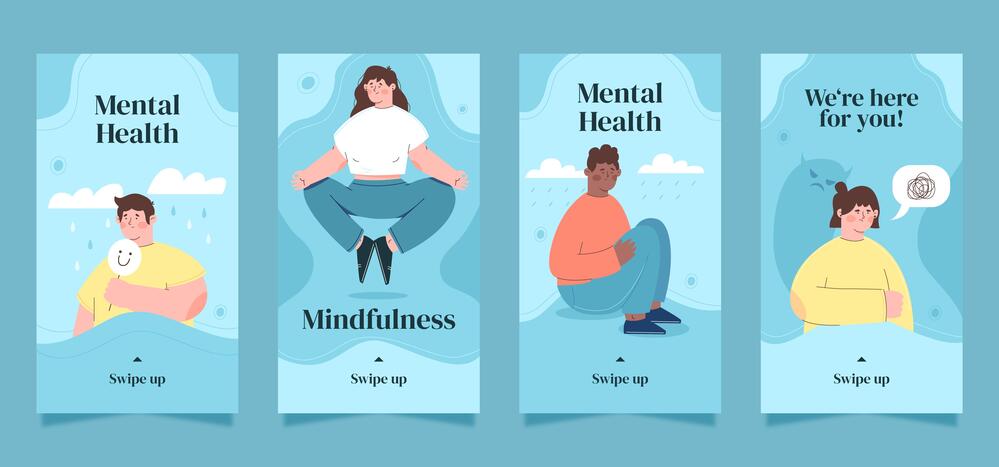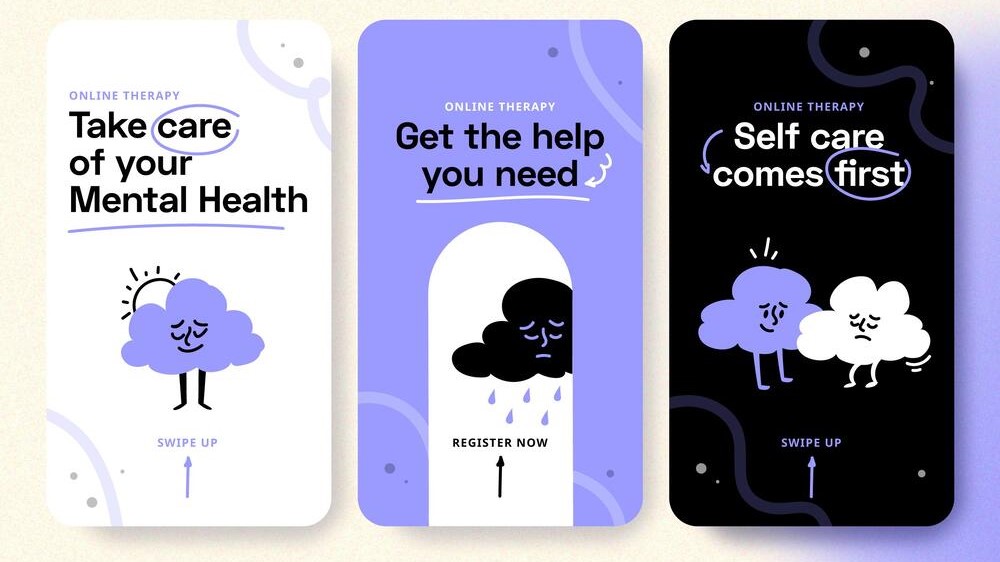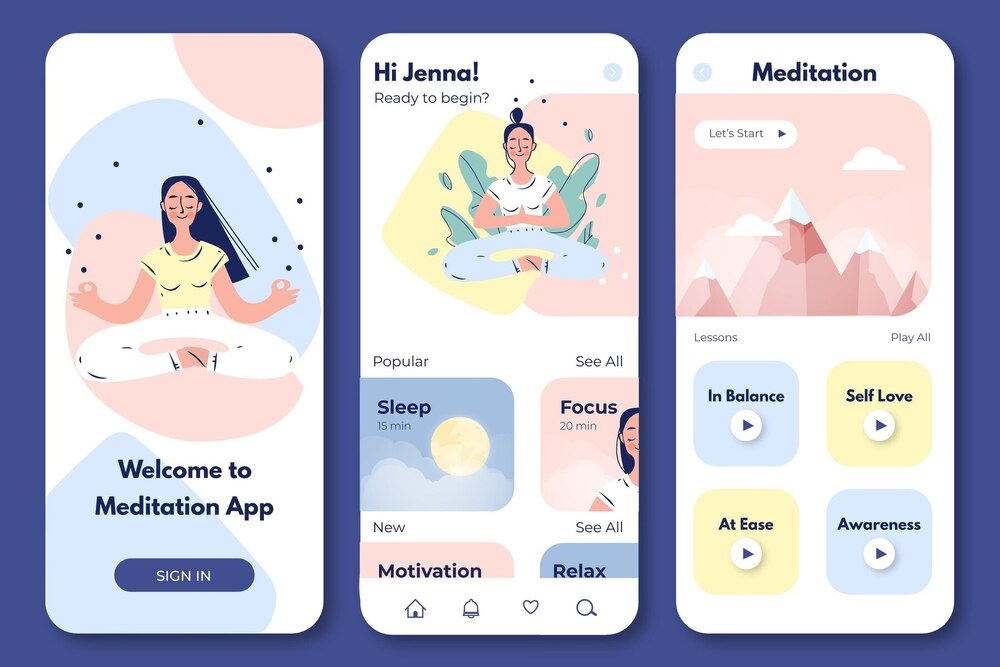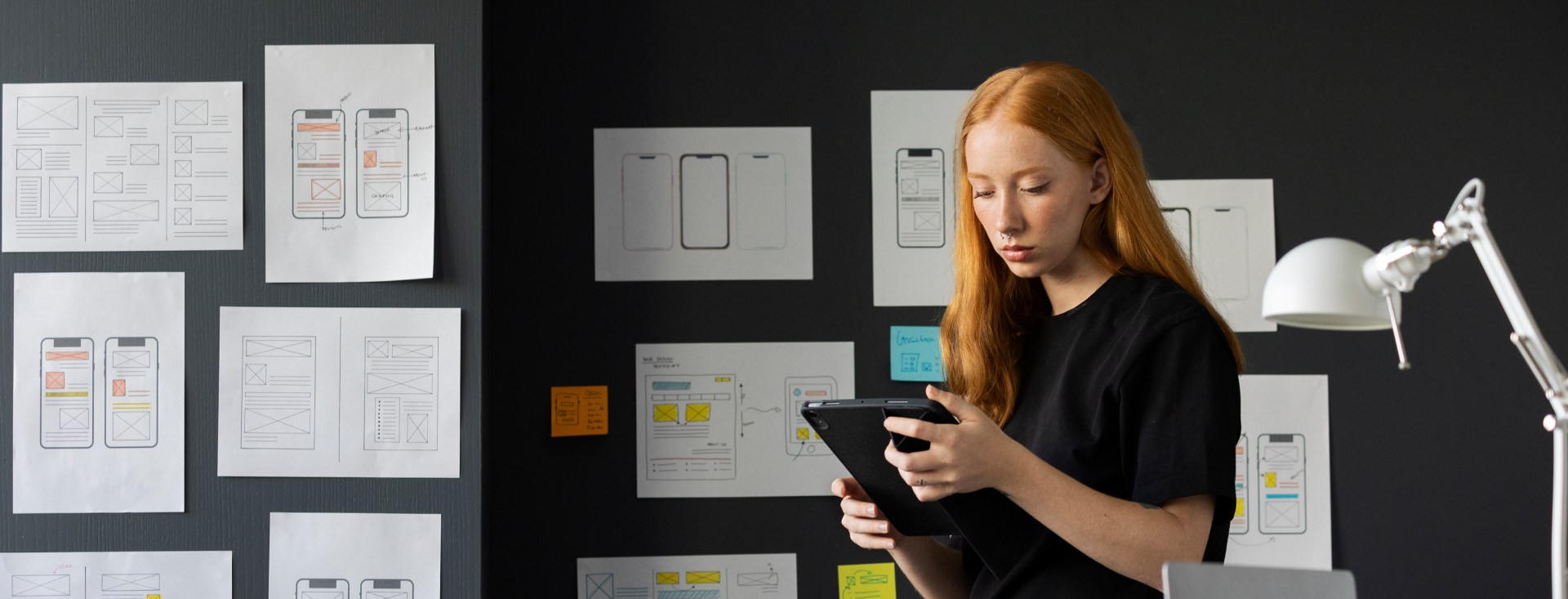How Much Does It Cost to Develop a Mental Health App?
January 30, 2025
Alex Shubin | Founder & CEO at SDA

Today, we are witnessing that emotional fitness has found a powerful ally – in technology. We all can carry a supportive companion in our pocket – one that understands our state, offers timely insights and provides resources and aid exactly when we need them. Mental health applications have transformed from a novel concept to an essential lifeline for millions worldwide.
As a digital entrepreneur or business in the supporting people niche, you’ve probably noticed that the mental health app segment is exploding. And if we glimpse into numbers, we’ll see they confirm the sector is on an incredible trajectory.
From a bit lower than $5 bln last year (2023), it’s set to skyrocket to almost $15 bln ten years later (by 2033), and this growth does not happen out of nowhere. Reports by NIMH show that almost 20% of American adults live their lives with an emotional struggle.
So, building a mental health app isn’t just a promising business opportunity. Entering the niche, you create a digital companion that can be someone’s guide during their darkest moments. At the same time, since correctly or incorrectly calculated resources can make or break your project, before committing you might want to meticulously dissect potential expenses and ensure no unexpected financial surprises.
Looking ahead, we want to note that the cost to develop a mental health app hinges on the sophistication of its features, the skill level of the development crew, the projected timeline, and more.
In this article, we’ll break down the mental health app development cost, from basic applications to advanced ones, and study the components that shape it. Plus, you’ll get cost-cutting hacks to optimize your investment.
Why Creating a Mental Health App Can Be Your Most Meaningful Project
When stress weaves through our days, inner wellness care has evolved from a whispered need to a loud, urgent necessity. Unlike traditional therapy models confined by time and geography, apps that help with mental health offer unprecedented accessibility.
They transform smartphones from potential sources of anxiety into powerful platforms of healing and personal growth because they:
- Provide personalized aid mechanisms 24/7
- Break down barriers of possible social biases and limited professional availability
- Ensure anonymity for users uncomfortable with traditional counseling settings
- Democratize mental health support overall by reaching individuals in remote areas and those with financial constraints
- Offer scalable, bespoke mental health resources
Our profound experience proves that technology in the niche is not about replacing human connection – but augmenting it. By integrating evidence-based psychological strategies with user-friendly design, mental health app developers can create experiences that feel truly intuitive and helpful.
Moreover, along with coping techniques and emergency resources, a well-designed application can provide a sense of community for those feeling isolated.

Decoding Development Cost for Mental Health Apps
We can compare the whole process of creating such platforms with constructing a nuanced psychological toolkit. Every feature in the “toolkit” should become a carefully considered intervention that addresses a specific need of your users.
When building a mental health app from scratch, the complexity of your future application plays a starring role: straightforward mood trackers cost far less than AI-driven therapy apps.
Then there’s the choice of platform: native applications for iOS and Android require independent development (and cost more), while a unified platform approach can cut down on both – time and budget.
Let’s take a closer look at each factor that will shape your investment.
1. Simple tool vs complex ecosystem
Mental health applications can be categorized into 3 key stages of sophistication. Each tier significantly affects the time and tech expertise required for the development, the overall experience your users get with the platform, and – ultimately – your expense:
- Basic apps. Building a small app falls in a price band ranging from $10,000 to $12,000. These applications provide basic capabilities (e.g., virtual diary, mood logging, and pre-selected self-help resources). They are analogous to a dependable kit for emotional first aid – effective, usable, and simple.
- Platforms for more enhanced support. Mid-level mental health mobile apps are often valued at $15,000 to $20,000. These platforms introduce more intricate elements: personalized wellness plans, therapist messaging, intelligent reminders, and more. They serve as a comprehensive wellness collection of tools and offer more targeted support and engagement.
- Advanced solutions. As this tier’s platforms integrate groundbreaking technologies, creating such a platform can cost you $25,000 to $50,000 or more. Equipped with teletherapy, compatibility with health devices (wearables), and intelligent mood evaluation tools, cutting-edge mental health apps become holistic wellness assistants.
2. Platform choice
The easiest way to explain this factor is by comparing it to picking out the right car for a complex journey – your right selection can dramatically influence your entire expedition.
So, native platforms (Android/iOS) represent precision-engineered solutions. These dedicated apps provide the highest performance, most natural user experience, and direct access to device-specific features. However, they usually come with a heavier price tag.
Cross-platform options offer a strategic substitute. Frameworks designed for multi-system compatibility let developers write a single codebase to function on various platforms. This approach can significantly cut the cost of mental health app development. Is there any trade-off? Yes, there is slightly limited access to device-specific functionalities.
3. UX as emotional architecture
When you develop mental health applications, you shouldn’t lоse sight of the fact that design is far more than aesthetic appeal here. It’s rather a critical bridge between modern tech tools and your user vulnerability.
UI/UX design becomes the silent language of emotional support, where every pixel, color, and interaction can either create comfort or generate friction.
What’s more:
- Accessibility is a fundamental necessity in the niche. Designers must create interfaces that welcome users from diverse backgrounds, cognitive abilities, and emotional states. This means intuitive navigation, high-impact color combinations, adaptable text sizes, and effortless interactions – every element should contribute to feeling like a gentle, understanding companion.
- Engagement demands psychological insight. Color psychology plays an essential role – soft, calming hues create a sense of safety, while carefully chosen typography communicates approachability and warmth. Interactive elements must feel responsive yet non-intrusive.
Your goal is simple yet profound: build a mental health app that feels less like software and more like a trusted friend.

4. ”Silent guardians” of user trust and data protection
The backend infrastructure is like an intricate underground network – complex, powerful, and critical. It’s the digital backbone that turns a simple app for mental health into a robust, secure (virtual) space of psychological support.
Your backend architectures must anticipate user growth, handling everything from a dozen users to thousands without performance degradation.
Hence, your prime focus should fall on:
- Secure databases – They’re confidential vaults protecting your users’ most sensitive information.
- Cloud storage solutions – They offer scalability and reliability, enabling apps to grow alongside user needs.
Scalability for apps to improve mental health isn’t merely a technical term, but a promise of continuous support. The true art lies in creating a backend that is reliable and feels invisible to users. Each line of code represents a commitment to user privacy, data integrity, and uninterrupted service.
5. Broadening your mental health therapy app capabilities
Any integrations you choose to implement on your platform create more complexities and so boost your development costs. On the other hand, such partnerships also drastically expand your app’s capabilities:
- Video APIs – Transform apps from static tools to dynamic platforms. Telehealth integrations like Twilio or Zoom raise your spending but enable instant counseling sessions that break geographical barriers.
- Payment gateways – Allow your users to access your premium services with confidence and ease. On the other hand, implementing secure, seamless payment systems typically increases your expenses, too.
- Analytics tools – Help understand your user behavior, engagement patterns, and potential areas of improvement. These solutions can surely add to your budget but they offer a clear picture of how your users interact with your application.
When each integration is a carefully orchestrated connection, it expands your mental wellness app’s potential to provide meaningful, comprehensive aid.
6. Adherence to regulations
НІРАА compliance in the United States represents a rigorous framework that substantially boosts the cost of building a mental health app. Each regulation becomes a complex puzzle and demands attention to data protection, user consent, and privacy protocols.
European developers face GDPR’s requirements, which mandate specific data handling practices that extend beyond traditional software development.
Local regulations can introduce their own challenges and contribute to a mosaic of legal considerations. When you hire mental health app developers, they must craft an application that seamlessly adapts to different jurisdictional requirements and ensures that user data remains protected across international boundaries.
This may seem complicated to you, but the true cost of compliance goes beyond your monetary investment. Our clients say that it is about building a foundation of trust. Each encrypted data point and each carefully constructed privacy policy represents your commitment to protecting human dignity in the digital realm.
7. Team behind your mental health application development
The development partner you go with is – nothing more, nothing less – the driving force behind your project. The right expert group can turn technical elements into a thriving enterprise.
A comprehensive crew typically includes several professionals, including a UI/UX designer, a backend developer, a front-end developer, and more. Their expertise levels drastically influence your project’s success and – also – costs.
Although you have options here: North American and Western European teams usually charge premium rates, while Eastern European developers offer high-quality but more cost-effective solutions.
Please also note that the specialized emotional well-being tech niche requires more than coding skills. It demands a deep understanding of user psychology, privacy considerations, and technological innovation. Experienced teams bring invaluable contextual knowledge, and anticipate your user purposes/needs and potential tech challenges before they emerge.

Tips for Slashing Cost
As a digital wellness entrepreneur, you may face the pivotal challenge of starting a mental health app, outstanding and powerful, without draining your financial resources.
How to create a mental health app that you can afford? There are methods to cut costs for your project. Moreover, some of them logically follow from the factors mentioned above:
- Build a functional prototype. MVP serves as a starting point that captures the essential features. Instead of constructing an elaborate final version, you can create a lean one. It allows you to test hypotheses: Will users find value in your app? What features resonate most deeply? Once you launch a focused version, you can acquire responses and polish your mental health application.
- Use a unified code. Cross-platform frameworks considerably reduce the financial burden of creating independent apps for Android and iOS. Plus, maintenance becomes streamlined – a single codebase means that fewer resources will be spent on updates, bug fixes, and improvements in the future.
- Choose API efficiency. When you apply pre-built APIs, they eliminate the need to construct complex functionalities from scratch. Video consultation APIs like Twilio, payment gateways, and robust analytics platforms offer a tested solution at a fraction of your costs.
- Outsource development wisely. There are regions where you can get quality mental health app development at keen prices. Eastern Europe boasts skilled tech pros at competitive rates. Countries like Ukraine offer perfect talent pools with profound software engineering expertise. These professionals also bring a deep understanding of global software standards and ensure your app adheres to stringent healthcare requirements.
These tips can help you create a mental health app without burning through your startup capital. In our opinion, smart saving must make every dollar work harder for you.
How SDA Builds Successful Mental Health Solutions: Case Studies
To date, we've contributed to dozens of mental health applications at different stages of development, from concept to completion. Let’s unpack a few stories.
Samata Health
The Samata Health platform helps find licensed therapists for employees, saving employers time and ensuring they only pay for sessions employees actually use. Plus, the software can function as an outsourced partner for building a healthy team culture and be used for the company’s DEIB objectives. It's available to businesses worldwide.
We took over a project loaded with critical issues:
- An unstable platform with major optimization issues and a complete lack of project documentation
- A sluggish website
- Security vulnerabilities and non-compliance with privacy standards
- To top it off, email notifications were constantly misfiring
As a result of our intervention, Samata Health achieved:
- Request processing time 1 sec (instead of 15)
- 24/7 expert support through instant messaging
- Zero security risks and meeting all data protection criteria
Now, Samata Health became a reliable, efficient partner in workplace wellness for growing teams seeking accessible psychological care.
Learn more about Samata Health case
App for mental health support
The second case concerns the improvement of an already thriving application striving to further develop. Combining mood tracking, audio tools, and guided plans, this mental wellness app is designed to ease struggles with depression, stress, bad mood, and anxiety.
Though already a success, the app’s creators wanted to push its potential further. Their goal was to simplify life’s trickiest moments – those uncomfortable conversations we all dread.
This is where our team joined the project. We introduced a unique text generation feature. It helps users craft messages for friends, family, colleagues, or romantic partners, tailored to the context.
It offers:
- Customization
- Text editing
- Hints to refine wording (making talks less daunting)
Now, with the app, users can improve their communication skills, approach their relationships with greater ease, and build stronger connections.
Learn more about Mental Health App case

Wrapping It All Up
Developing a mental health and wellness app is both an art and a financial strategy. Plus, we have not specifically emphasized it here, however, alongside strategic investment and precision in development, these digital solutions require deep understanding and empathy for their users.
Since the price can fluctuate depending on the scope, functionality, and more, you can consider starting with a simple product that you can order from a reliable mental health app development company in a region with affordable rates.
Our team understands that your every dollar matters, especially when building platforms to support emotional well-being. Our expertise spans the entire development spectrum – from initial concept to final deployment. When partnering with our customers, we don’t just build apps – and that’s it. We create strategic solutions that meet both your user expectations and your probable budget constraints.
Considering how to make a mental health app that is both affordable and potentially thriving? Let’s talk over how SDA can help you deliver exceptional value without breaking the bank.
Connect with us for a consultation that can become the first step towards your digital wellness breakthrough.



